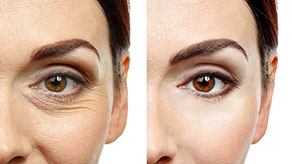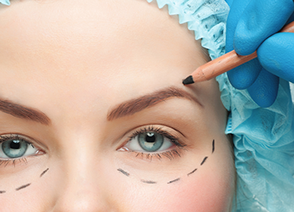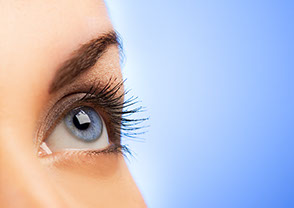Where does sagging occur most often on the eyelid?
One of the most common problems we see around the eyes is the upper eyelid. One of the most common reasons our patients come to us is sagging in the upper eyelids and the lids touching the eyelashes, which can disrupt the makeup line in women, and in men, the eyes get tired easily while working and reading. When we look at the upper eyelid, we see that the eyelid skin, like other traces of time, sags downward due to gravity. In some cases, this sagging can be accompanied by upper fat tissue herniation.
What kind of problems does sagging eyelids cause?
We see that our patients, who are trying to prevent sagging eyelids from closing the eyes, use their forehead muscles unnecessarily and try to relieve the weight of the upper eyelids by raising their eyebrows. This unnecessary use of the forehead muscles not only causes rapid fatigue, shortening the reading-working time, but also sometimes a strange expression of surprise can occur in the person when the eyebrows are raised too much. In addition, constantly trying to raise the eyebrows can cause horizontal lines in the forehead muscles, deep wrinkles, and a tired appearance that is older than age.
Can there be conditions that mimic upper eyelid droop?
In some cases, we see eyebrow droop that mimics upper eyelid droop. Although the eyelids are actually in a normal line, a false eyelid droop can occur because the eyebrow line has fallen down. Or, eyelid droop can accompany a certain amount of eyebrow droop. In this case, it is very important to make the diagnosis correctly and to distinguish which one and how much.
What are the problems in the lower eyelids?
When we come to the lower eyelid, we can see fatty tissue bags and sagging skin. Due to fatty tissue herniation in the lower eyelid, the groove between the cheek and the eye, which we call the tear trough, can deepen over time. These are mostly middle-aged problems. Generally, in older patients, the loosening of the lower eyelids and the resulting inward or outward turning of the eyelid can accompany the event. This can cause a series of problems such as watering, stinging, burning and redness in the eyes of patients, a bad appearance due to the white of the eye being too visible, and infections due to eyelashes scratching the cornea of the eye.
Are there things I should pay attention to before the surgery?
It is important for our patients to consult their doctors about 1 week before the surgery to stop taking blood thinners, if any, both to reduce bleeding during the surgery and to reduce post-operative edema and bruising. Otherwise, the blood leaking from the wound lips after the surgery will work to increase edema and bruising.
What should I do when I go home after the surgery?
We especially recommend that they apply ice and sleep with their heads slightly elevated on the first day of the surgery. Water should not touch the surgical areas. Therefore, the operated area around the eyes should be protected when taking a shower. If possible, we recommend that the hair be washed at the hairdresser so that the water does not touch the area around the eyes. There is no problem with washing the body.
When can I return to work?
We remove the stitches of our patients on the 7th day, and most of our patients can usually return to work by the end of the first week.




